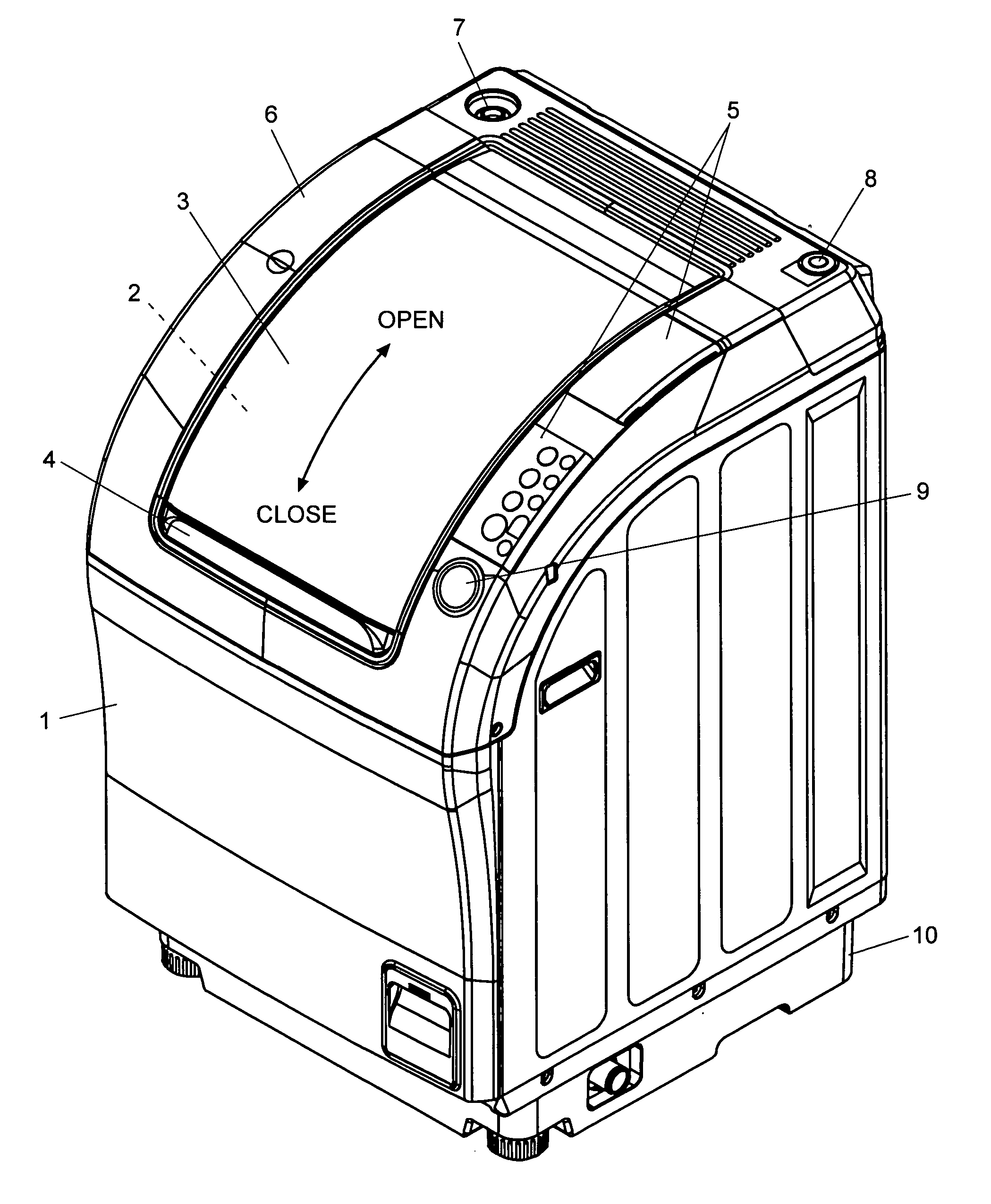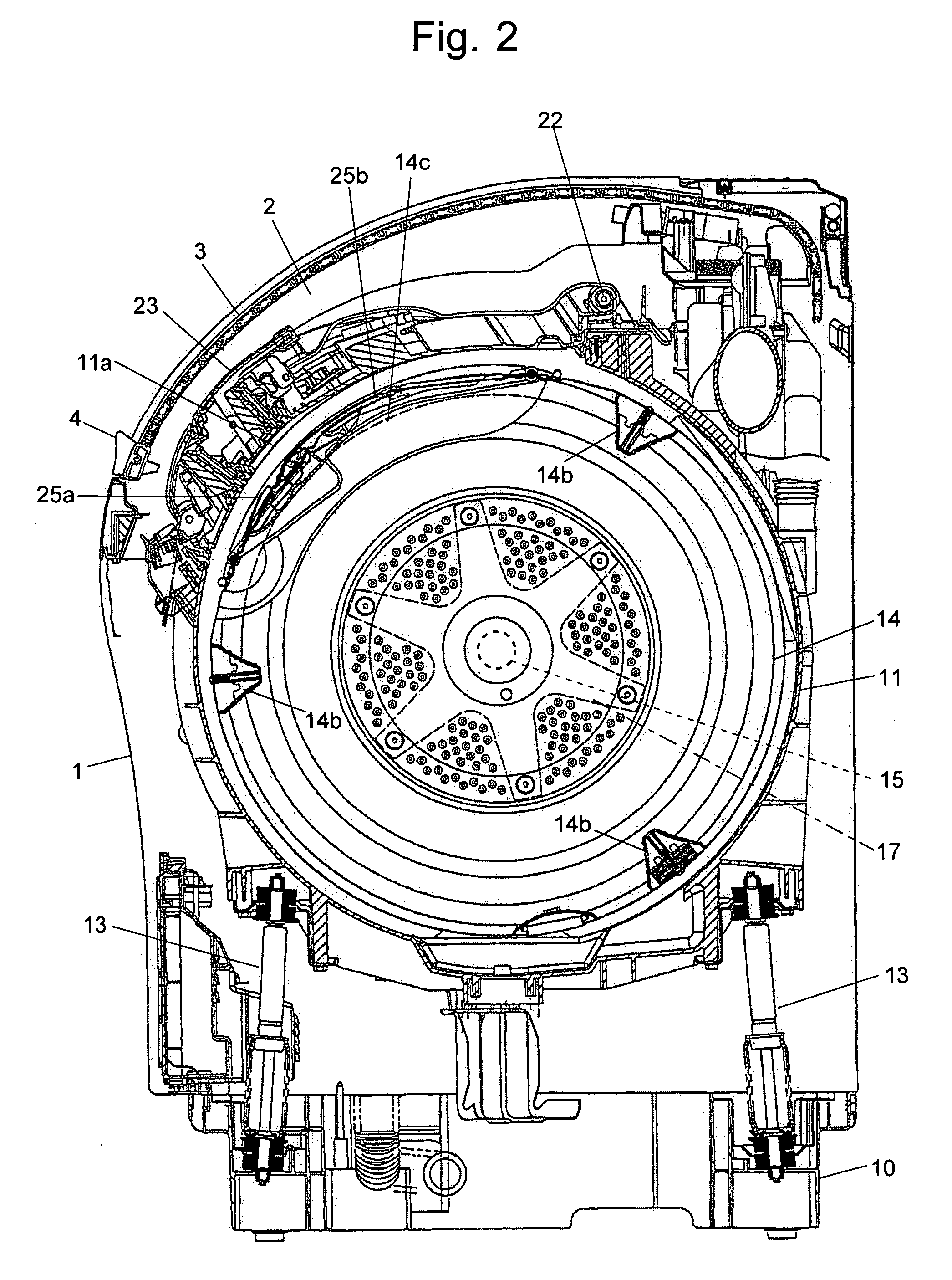Drum type washing machine
a drum type and washing machine technology, applied in other washing machines, washing machines with receptacles, textiles and papermaking, etc., can solve the problems of abnormal vibration and noise, eccentric load around the rotation shaft, and mass imbalance, so as to shorten the time required for dehydrating operation, shorten the time, and raise the drum speed
- Summary
- Abstract
- Description
- Claims
- Application Information
AI Technical Summary
Benefits of technology
Problems solved by technology
Method used
Image
Examples
Embodiment Construction
[0034] A drum type washing machine as an embodiment of the present invention is described with reference to the attached drawings.
[0035]FIG. 1 is a perspective view of the drum type washing machine, FIG. 2 is a vertical sectional view of the main part of the drum type washing machine viewed from the right side, and FIG. 3 is a vertical sectional view of the main part of the drum type washing machine viewed from the front.
[0036] The housing 1 of the present washing machine has a curved surface extending from the top to the front and having a large opening 2 through which the laundry is to be loaded. The opening 2 can be closed with the shutter 3 consisting of slats linked in series, which can slide along the curved surface in the rear-to-front direction. With the shutter 3 in the closed position, if the user presses the button 9 located on the right side of the shutter 3, the shutter 3 automatically slides backwards to uncover the opening 2, as indicated by the arrow in FIG. 1. To ...
PUM
 Login to View More
Login to View More Abstract
Description
Claims
Application Information
 Login to View More
Login to View More - R&D
- Intellectual Property
- Life Sciences
- Materials
- Tech Scout
- Unparalleled Data Quality
- Higher Quality Content
- 60% Fewer Hallucinations
Browse by: Latest US Patents, China's latest patents, Technical Efficacy Thesaurus, Application Domain, Technology Topic, Popular Technical Reports.
© 2025 PatSnap. All rights reserved.Legal|Privacy policy|Modern Slavery Act Transparency Statement|Sitemap|About US| Contact US: help@patsnap.com



